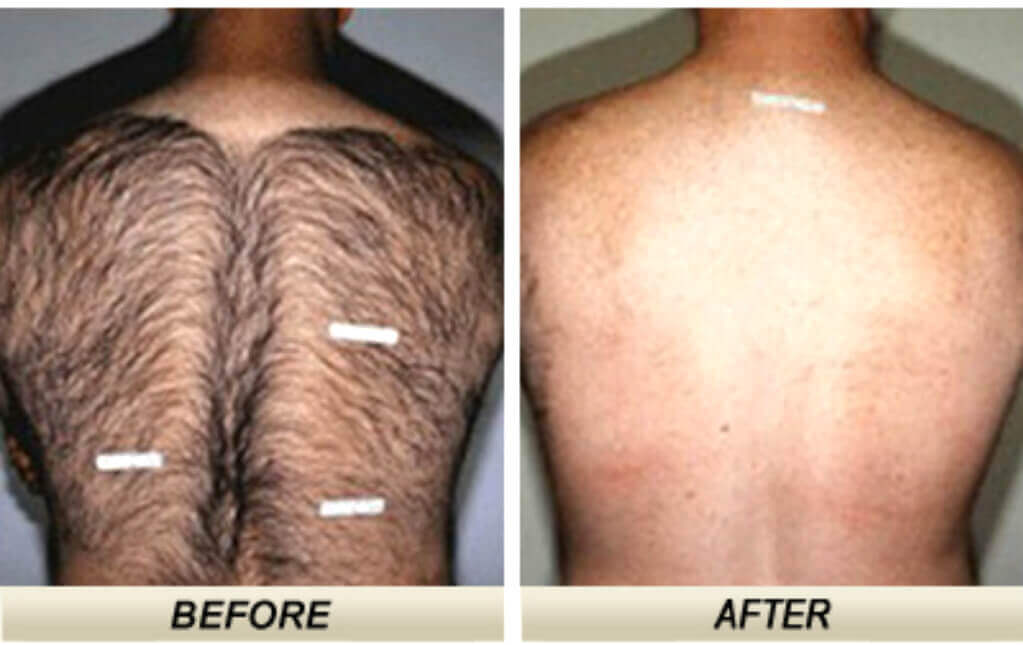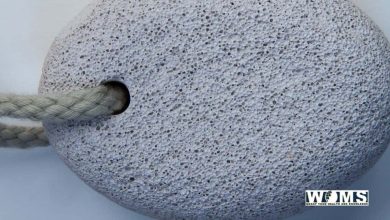Pros and Cons of laser hair removal
Is laser treatment the right hair removal method for you?

Everything you need to know about laser hair removal
Let’s talk about the pros and cons of laser hair removal. Gaining unfavourable hair is a soporific chore that many people grapple with it. Lots of people got through the challenges of removing unwanted hair on a routine basis. You must know about the laser hair removal cost too.
While removing unwanted hair by shaving, waxing, tweezing, electrolysis can have temporary effects, and also it can be time-consuming and painful. But it is reversed when it comes to the case of laser hair removal. There can be permanent hair removal using lasers if you follow our tips. Although this method is good for hair removal. There are pros and cons of laser hair removal. So. let’s know about the pros and cons of laser hair removal.
Laser hair removal is one of the popular practices for the removal of undesirable hair from the different parts of the body. It is effective if it gives long-lasting solutions irrespective of hair color. Laser hair removal option to damage the hair follicle to minimize hair growth.
Key point
- Human hairs exhibit various growth cycles
- Hair growth cycles can be impacted by various factors including medications, seasonal changes, and varying hormonal changes
- Attempts at correlating treatment intervals with growth cycles have generally failed
What is laser hair removal?
Laser hair removal is the medical practice of hair removal through exposure to laser light pulses. It destroys the hair follicle. It had been performed experimentally for about twenty years before becoming commercially available in 1995 and 1996.
The laser detects the hair exclusively by focusing on the pigments cell that resides in the hair follicles. Once the melanin in the hair is targeted, the laser burns all the way down, the hair follicle and the root of the hair. After a few sessions of laser hair removal, you don’t have to go with the shaving, waxing and many more. There are pros and cons of laser hair removal which we should know about before doing the laser hair removal treatment.
The pros and cons of laser hair removal are discussed in the principal article. Let’s look into the pros and cons of laser hair removal.
Facts about laser hair removal treatment
- Its success depends on two major factors i.e skin type and hair colour.
- The laser hair removal is effective on only growing hair follicles.
- It is not guaranteed as a permanent hair removal technique.
- The treatment takes a long period of time for the hair follicles to shed off usually within 2 to 3 weeks.
- It is recommended that the laser treatment should be spaced 3 to 8 weeks apart depending on the total area covered and also the hair growth cycle.
In the pros and cons of laser hair removal we will discuss about pros then cons of laser hair reomval.
What are the pros of laser hair removal?
The pros of laser hair removal is given below:
- While laser hair removal has been around for over two decades. The pros of hair removal are:
- You can get done anywhere in the body and the laser machine cover a large area in a small amount of time.
- While laser hair removal doesn’t get rid of hair forever, it drastically reduces hair growth to the point you don’t have to worry about shaving, waxing, or more.
- When it comes to the pain lever, laser hair removal falls somewhere between shaving (painless) and waxing (hurts more). The technique uses ice to help numb the area before and after the laser treatment. It is a progressively less painful treatment.
While taking laser hair removal as a treatment always looks at the pros and cons of laser hair removal. If there are many pros then cons of laser hair removal then you can think of having laser hair removal
What are the cons of laser hair removal?
Of course, no hair removal method is perfect which is why there are also some cons to laser hair removal which you should keep in mind while having this treatment.
- It is not yet approved as a form of permanent hair removal method.
- It’s a very long process.
- There are some serious side effects of laser hair removal. Some of them are skin burn, itching, swelling, discoloration, as well as pain, tingling, and numbness around the treatment area.
- It is very expensive.
By looking this you can say there are many pros and cons of laser hair removal. While taking laser hair removal as a treatment always look the pros and cons of laser hair removal.

Also read: pros and cons of eating meat
Types of laser hair removal
Types of laser hair removal play a major factor in the pros and cons of laser hair removal. The types of laser hair removal are enlisted below:
Normal mode alexandrite laser
- 755 nm visible light-near infrared wavelength
- Excellent melanin absorption, albeit somewhat less than the now rarely used ruby lasers
- Slightly less risk of post-treatment pigmentary changes as compared to older initial ruby lasers (risk is lessened
Diode laser
- 800 nm near-infrared wavelength
- Good melanin absorption, albeit less than that seen with ruby and alexandrite lasers
- Slightly less risk of post-treatment pigmentary changes than alexandrite lasers (risk is lessened with significant cooling or when longer pulse durations are utilized)
- 800 nm wavelength penetrates deeper into the dermis than 755 nm alexandrite lasers
- Reasonably transportable smaller laser systems
ND: Yag laser
- 1064 nm infrared wavelength
- Much less melanin absorption than seen with visible light wavelengths
- Significantly less risk of post-inflammatory pigmentary changes than seen with visible light
- Deeper penetration into the dermis than seen with visible light wavelengths
- Nanosecond pulse duration systems lead to only temporary hair reduction; newer millisecond pulse duration systems may lead to better results
Intense pulsed light
- Non-laser light source
- Delivered wavelengths between 590 nm and 1100 nm
- Filters are used to choose delivered wavelengths
- Myriad choices of pulse durations
- Risk profile similar to visible light lasers
- Better intense pulsed light technologies produce identical results to those seen with lasers
Laser hair removal in ethnic skin
- Laser hair removal in ethnic skin types requires greater caution
- The safest lasers in Fitzpatrick skin types may be Nd: YAG lasers
- Because epidermal melanin competes with follicular melanin, effective cooling is mandatory when treating darker skin types
Laser hair removal of non-pigmented hairs
- Laser epilation of light hair is significantly more challenging than that of dark hair
- The application of exogenous liposomal melanin may temporarily augment the naturally occurring follicular melanin chromophore, and thus enhance laser epilation
- The use of radiofrequency technology in conjunction with a light-based source system provides enhanced laser epilation by combining the principles of selective photo-thermolysis and electro-thermolysis
- Photodynamic therapy
Mechanism of laser hair removal
You have learned about the pros and cons of laser hair removal. Now let’s learn about the mechanism of laser hair removal.
Light can destroy hair follicles via three mechanisms:
- thermal (due to local heating), mechanical
- (via shock waves or violent cavitation), and photochemical
- (Per generation of toxic mediators like singlet oxygen or free radicals).
Laser hair removal is thought to work through selective damage to the hair follicles, and this mechanism is based on the principles of selective photo-thermolysis.
Melanin acts as the chromophore for targeting hair follicles, and the lasers or light sources used for hair removal lie within the optical window of the electromagnetic spectrum where absorption by melanin and deep penetration into the dermis are combined.
Within the 600–110 nm region, deep and selective heating of the hair shaft, hair follicle epithelium, and hair matrix is possible. In contrast, selective cooling of the epidermis minimizes epidermal injury and damage to epidermal melanin.
Appropriate selection of wavelength, pulse duration, and fluency is essential in optimizing the hair removal while minimizing any potential side effects.
A laser pulse that is too long can cause heat damage to the surrounding tissues, resulting in permanent scarring.
The standard mode ruby laser (NMRL) is one of the lasers that have been used as a depilatory. This laser only penetrates approximately 2 mm, and the bulge region of the hair follicle lies deeper than 2 mm.
Therefore, it may be suggested that the lack of penetration to this area contributes to the poor depilatory results of this laser.
An energy loss of up to 50% may occur as the laser penetrates through the first 1 mm of skin. Topping et al. postulate that approximately 50% of the incident fluence reaches both the bulge region and the hair bulb. When choosing treatment parameters, several factors must be considered.
The hair cycle is important as the frequency of treatment must be timed to treat the hair in the anagen cycle when hair is more heavily melanized; however, as discussed below, there is controversy as to whether or not the hair cycle phase truly impacts laser hair removal effectiveness.
Additionally, the hair diameter affects the optimal thermal relaxation time and pulse width. To obtain spatial confinement of thermal damage, the pulse duration must be shorter than or equal to the hair follicle’s thermal relaxation time; a thicker hair follicle will have a longer thermal relaxation time than a thinner hair.
Thermal relaxation times of human terminal hair follicles are estimated to vary between 10–50 msec.24-26 Q-switched lasers operate within the nanosecond domain; therefore, they have a tiny spatial scale of thermal confinement. Because of this property, these lasers damage individual pigmented cells within the hair follicles and confine heat.
This property prevents any effective hair loss by Q-switched lasers. The depth of hair root (which impacts the chosen wavelength, spot size, and energy), as well as the hair (which is directly related to the amount of melanin present), will also help determine the most effective treatment parameters.
Before treatment, the possibility of adverse effects must be discussed with patients. Adverse events include, but are not limited to, hyperpigmentation, hypopigmentation, erythema, edema, scarring, pain, and blistering.
Beyond understanding the basic mechanics of laser hair removal, physicians seek to determine what the recommendations are regarding the ideal interval between sessions, what is the absolute number of sessions, should patients pluck, wax, or shave before undergoing laser hair removal, and what are the recommendations regarding sun exposure before and after treatment.
Additionally, some areas should not be treated with laser hair removal. These guidelines are essential in order to optimize treatment results and patient satisfaction while minimizing potential side effects.
Laser hair removal cost
The laser hair removal cost varies based on multiple factors, including:
- The specialist’s experience
- Geographic location
- Size of the treatment area
- Number of sessions
Laser hair removal cost in Nepal
The laser hair removal cost is 3 to 4 times lesser in Nepal, ranging from $40 to $80 per session (approx NRS. 5,000-10000) per session. To know the exact costs of laser hair removal for you, you need to contact a particular clinical.
Laser hair removal cost in India
In India, the laser hair removal cost starts from $22 per session (approx Rs1500). But the price varies from city to city. The prices are listed below for some cities:
- Mumbai: $13- $528 (RS1,000-Rs40,000)
- New Delhi: $13-$860 (Rs 1,000- Rs 65,000)
- Kolkata: $10- $1000 (Rs 800- Rs 75000)
- Banglore: &12- $900 (Rs 900-70,000)
Laser hair removal cost in Bangladesh
The laser hair removal cost is cheaper in Bangladesh than in India. It ranges from $50-$100 (approx Tk 4000-8000) per session. The price varies from clinic to clinic, so you must visit the clinic to know the exact cause.
Laser hair removal price in the USA
Depending on the area of the treatment, the typical price of laser hair removal treatment in the USA ranges from $200 to $800. According to the American Society of plastic surgeons, laser hair removal treatment costs around $429 in the USA.
Brazilian laser hair removal cost
Small areas like an upper lip range from $150 to $250 per session. And the more significant areas like legs and backs can Brazilian laser hair removal cost $500, $700, $1200 per treatment respectively.
What is the ideal interval between sessions?
The most appropriate hair cycle phase for treatment and which elements within the follicular unit should be targeted are still a matter of debate.
Traditional thought is that only anagen hairs respond to laser or intense light pulses. This has been partially attributed to the fact that anagen hair bulbs contain the highest concentration of melanin, and in humans, the melanin within the pigmented hair shaft serves as the dominant chromophore;1,30 hair follicles contain a greater density of melanocytes and larger melanosomes when compared to the epidermis.
As the hair follicles enter catagen, melanogenesis ceases, thereby reducing pigmentation of the subsequent telogen-stage bulbs. This reduction in melanin concentration is proposed to make the telogen hair less susceptible to laser pulses.29,31,32 Kolinko et al. confirmed this theory with the use of a Q-switched Nd: YAG laser.
After treatment, areas with high numbers of anagen hairs had a greater decrease in hair density than areas with lower anagen counts. They also showed that total hair loss after treatment is less than anagen hair loss and that there was an apparent lack of response in telogen hairs following laser treatment. It is important to note that untreated hairs have asynchronous growth cycles.
In order to be effective, the laser or light source should damage one or more of the growth centers of the hair including the bulge cells, the dermal papilla, and the hair matrix. Anagen follicles may convert to telogen hairs after lasing, however, the hairs may or may not fall out soon after this conversion.
Anagen hairs can grow for a week or more before converting to telogen. Histologically, it has been demonstrated in long-term follow up that there is an identification number of hairs when comparing the control and laser-treated sites, however, in the laser-treated sites, there is a significant reduction in the number of large terminal hairs and a reciprocal increase in the number of small vellus hairs.
Another proposed mechanism of laser hair removal is through destruction of follicular stem cells that regenerate the epidermis and its adnexal structures; there is experimental evidence to suggest that selective destruction of follicular stem cells alone will prevent hair regrowth because the bulge region of the follicle contributes to the newly forming hair matrix after induction by the dermal papillae during late telogen.
Follicular stem cells reside in the bulge region of the hair follicle. A recent study examined the effects of laser-mediated hair removal (using a diode laser or an Nd: YAG laser) on immunohistochemical staining properties of hair follicles. Investigators found that the external root sheath and hair bulb were essentially intact.
There was mild but variable thinning of the follicular epithelium at the isthmus and infundibulum. The hair shaft itself showed a thinned and shriveled appearance, and many follicles were entirely devoid of a hair shaft after treatment.
Some specimens demonstrated focal alteration of the internal root sheath. Using cytokeratins 15 and 19 as biomarkers for follicular stem cells, and CD34, which is a surface protein in the supra-bulbar outer root sheath and is either very low or entirely absent in the bulge region of human hair follicles, the woms examined the properties of the follicle following laser treatment.
They found that the immunohistochemical markers for the cells of the bulge region had a similar staining pattern before and after laser treatment, thereby suggesting that if the follicular stem cells are altered by the treatment, the changes are not detectable immunohistochemically. The editor postulated that there may be a functional change that results or that the laser may target other areas of the hair follicle.
Additionally, since the stem cells play an important role in wound healing and epithelial regeneration, the fact that these cells are not destroyed by laser treatment supports the safety of laser hair removal. There is debate as to whether or not the hair follicle is able to regenerate from the bulge area if the papilla is destroyed. There are differences in the manager: telogen ratio depending on the area that is treated.
For example, the axillae and bikini areas have a higher anagen: telogen ratio than the legs, arms, and chest;29,35 therefore, it may be suggested that these areas would respond better to laser hair removal with more noticeable differences in hair density.
Telogen may last a few months on the face and for several months on the legs and thighs; scalp hair remains in anagen for 2–5 years.23 There are also seasonal variations in hair growth. Beard hair grows faster during the months leading from winter to summer and slower during the months leading from summer to winter.36
Additionally, there are differences in hair growth rates between men and women secondary to hormones and underlying genetic susceptibilities.37 All of these factors must be taken into account when selecting the interval between treatments.
In a study by Chana et al., the median hair-free interval after the final treatment in 346 patients was 8 weeks. There was no overall difference in the hair-free period between males and females except in regard to facial hair. The median hair-free interval on males was 3.6 weeks as opposed to 8.8 weeks on female faces.16 There was a progressive increase in the hair-free period after repeat treatments.
The editor concluded that the hair-free interval is helpful in assessing treatment efficacy and that in a significant number of patients, laser treatment may not cause permanent depilation but it may prolong the telogen phase of hairs. Bouzari et al.
studied 24 females who received laser hair removal with an 800 nm diode laser to the face or neck areas after ceasing any other hair removal methods for 2 months prior to laser treatment. The patients received between 2 and 3 sessions of laser hair removal and were treated at intervals of 45 days, 60 days, or 90 days.
The patients were seen in follow-up 5 months after receiving the laser treatments. The authors found that the shorter the treatment interval, the more the hair was reduced. The mean hair reduction was 78.1%, 45.8%, and 28.7% for the 45, 60, and 90-day interval groups respectively.
The ideal treatment interval remains a matter of debate. Bouzari et al. suggested that a shorter treatment interval is more effective. However, their study was confounded by differences in the total number of treatments among the groups (2 or 3 treatments). In the guidelines set by the European Society for Laser Dermatology, Dresner and Adatto recommended treatments every 4–8 weeks.39 In conclusion, most clinicians recommend an interval of 6–8 weeks in general; however, this may vary depending on the region of the body that is being treated.
Post-treatment
You must understand about the post-treatment in the topic pros and cons of laser hair removal. After treatment, you may probably experience laser hair removal burn. Moistures and ice packs are the best solutions for it.
For the face treatment, it is highly recommended patients should wear make up for some days after the treatment. The treated hair will completely be removed in four weeks so you can have sunscreen to reduce skin exposure to the sun.
Summary
Laser hair removal is a convenient, non-invasive, method for removing or permanently reducing unwanted body hair. It leaves the skin looking smoother and silkier than other removal techniques like waxing, shaving, and many more. But there is a presence of the pros and cons of laser hair removal.
Laser hair removal technique is one of the commonest aesthetic procedures performed everywhere. So before trying this technique, it’s better to know about its pros and cons of laser hair removal. Feel free to comment if you have any questions regarding the pros and cons of laser hair removal. If this article helped to get an idea about the pros and cons of laser hair removal then do share.
For more accurate information, on Laser Hair Removal consult a dermatologist at Bodycraft and embark on your experience!




